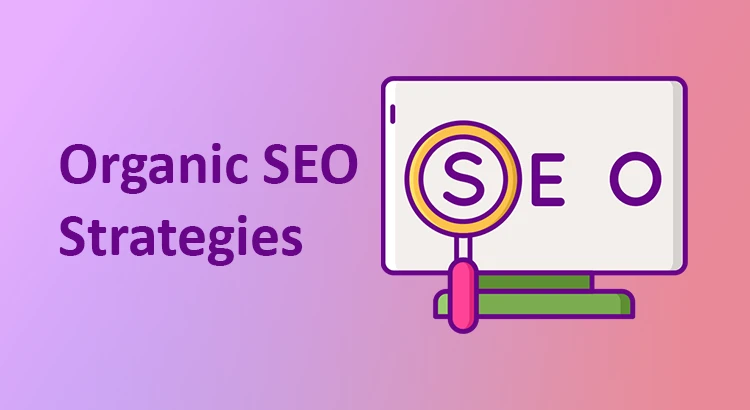Implementing effective organic SEO strategies is one of the most reliable ways to increase website visibility and attract long-term traffic. Through search engine optimization, websites can earn placement in unpaid search results and build authority over time. This guide will provide proven techniques that enhance your online presence and improve user engagement.
What Is Organic SEO?
It refers to the practice of improving your website’s placement in unpaid search results. Rather than relying on paid ads, it focuses on tactics such as keyword targeting, link building, internal linking, page performance, and content relevance. This approach ensures sustainable visibility by aligning with how search engines evaluate websites.
Top 15 Organic SEO Techniques
To maximize your site’s reach through unpaid results, apply these proven website optimization tactics:
1. Emulate Top-Performing Pages
One of the most effective content development techniques is studying what’s already working for others in your niche. By analyzing the top-performing pages of competitors, you gain insights into content formats, tone, length, and user engagement methods that are driving real results.
Pay close attention to the structure of these pages, the use of visuals, and how they organize their topics. Look for patterns across multiple sites. Are they focused on guides, product comparisons, or data-driven posts? Use this information to inspire your own content, not by copying but by improving on what’s already out there. This approach allows you to build stronger, more useful resources that can outperform similar content in website rankings.
2. Target Keywords Your Competitors Are Ranking For
A smart way to expand your visibility is by identifying the terms your competitors are successfully targeting but you haven’t explored yet. This process, often referred to as keyword gap analysis, uncovers opportunities that can lead to increased traffic when integrated into your content plan.
Look for relevant keywords that are drawing in visitors to other websites in your industry. Once identified, incorporate those terms naturally into your existing and new material. This tactic ensures your pages show up for queries your potential audience is already searching for, helping you grow your reach without starting from scratch.
3. Find (and Steal) Your Competitors’ Broken Backlinks
One powerful link-building tactic involves identifying broken links that currently point to your competitors’ content. These are links from other websites that lead to pages which no longer exist or return errors. You can turn these dead ends into opportunities by suggesting your own relevant material as a replacement.
Start by scanning high-authority sites for references to outdated resources from others in your industry. Then reach out to the site owners with a friendly suggestion to replace the broken link with a link to your well-crafted, valuable material. It’s a smart way to gain backlinks while helping others improve their user experience.
4. Leverage Internal Links
Internal linking is a foundational part of effective website ranking services. It involves connecting one page of your site to another, creating a clear map that both users and search engines can follow.
Strategically placed internal links help visitors navigate your site more easily while also signaling the importance of specific pages to search engines. This can improve visibility and help distribute page authority more evenly across your site. To make the most of this, link to relevant material using descriptive anchor text, and ensure there are logical pathways to both new and existing pages.
5. Manage Your Backlink Profile
Keeping a healthy backlink profile is essential for maintaining your site’s trustworthiness and ranking potential. Not every link that points to your website is beneficial—some may come from low-quality or irrelevant sources, which can harm your credibility with search engines.
While search platforms often ignore poor-quality links automatically, it’s still wise to monitor your link profile regularly. If you’ve used questionable link-building methods in the past and suspect a manual penalty, take corrective action. Disavowing harmful links or cleaning up spammy connections can help restore and protect your site’s performance.
6. Earn Authority Backlinks with Digital PR
Digital PR is a powerful outreach tactic aimed at earning mentions and links from reputable websites in your industry. Instead of relying solely on technical optimization, this approach focuses on building your site’s authority and relevance through high-value website copy and strategic communication.
Tactics that work well include publishing unique research, distributing press releases with newsworthy angles, and engaging in reactive outreach by becoming a source for journalists. These methods attract high-quality backlinks naturally, which support your long-term website optimization goals.
7. Turn Brand Mentions Into Links
Not every online mention of your business includes a clickable link, but many of those missed opportunities can be turned to your advantage. These are known as unlinked brand mentions, and they offer a simple yet effective way to strengthen your backlink profile.
Start by identifying sites that talk about your brand without linking to your pages. Then, reach out politely and request a link to the relevant section of your site. Since the mention is already there, most publishers are open to updating the site copy. This link-building technique is low-effort and often yields quick wins for improving your site’s authority and visibility.
8. Show Topical Expertise
Search engines aim to deliver the most relevant result for every query. That’s why it’s smart to optimize your material around broader themes—not just individual keywords.
This is where topic clusters make a real difference. A topic cluster is a collection of pages that explore specific subtopics linked to a larger subject.
They help search engines understand your site’s structure, highlight your authority in a niche, and improve overall performance in organic results.
A topic cluster typically includes:
- A main pillar page that focuses on a broad topic
- Several related pages that dive deeper into specific areas
- Internal links connecting all of them together
This setup signals topical depth and helps users (and bots) navigate your material more easily.
9. Optimize for People Also Ask
Search results today include far more than just a list of blue links. One of the most useful features you can tap into is the People Also Ask (PAA) box.
This section displays related questions along with brief answers, offering another chance for your material to appear in front of searchers.
To show up here, structure your material clearly, use question-based subheadings, and provide concise, helpful answers.
It’s a smart tactic to boost your presence on results pages and capture traffic for a wider range of related queries, without needing to rely solely on traditional website ranking services.
10. Optimize for Image SEO
Optimizing images for search engines helps your website rank higher and can drive additional traffic. To maximize your chances of appearing in image search results, you need to follow specific image SEO practices.
Here are a few best practices for image SEO:
- Use descriptive file names that clearly describe the image content
- Add alt text that explains the image, which is displayed when the image fails to load and read aloud by screen readers
- Compress images to enhance page speed, improving both user experience and rankings
- Create an image sitemap to help Google discover and index your images more effectively
- Implement image structured data, which enables relevant images to appear in SERPs
11. Improve Your Organic CTR Using PPC Testing
Optimizing your website for better rankings can also improve your click-through rate (CTR), which is a key factor in increasing traffic. Research shows that moving up just one position in the search results can boost your CTR by an average of 2.8%. By refining your site’s CTR, you can attract more visitors to your site.
Here are some elements that can influence your CTR:
- Title tag: This HTML element specifies the page title, often appearing in search results
- Meta description: A brief summary of the page’s content, displayed in search results
12. Optimize for the Core Web Vitals
The Core Web Vitals are key metrics that Google uses to assess the overall user experience on a website. These measurements focus on how quickly a page loads and how interactive and stable it is. Improving these aspects can lead to a better user experience and enhanced search engine rankings.
Here are the three Core Web Vitals you should focus on:
- Largest Contentful Paint (LCP): The time it takes for the primary content of a page to load. A target of 2.5 seconds or faster is ideal.
- First Input Delay (FID): The time it takes for a page to become interactive. This should be under 100 milliseconds, but will be replaced by Interaction to Next Paint (INP) in March 2024.
- Cumulative Layout Shift (CLS): Measures the amount of unexpected movement in visual content. A score of less than 0.1 is ideal.
13. Use AI in Your Content Creation Process
AI tools can play a significant role in streamlining your content creation. For instance, they can assist with generating optimized outlines for your blog posts, saving you time and effort.
By leveraging AI for these tasks, you can accelerate your content production, allowing you to publish more high-quality pieces. This increased output can help drive more organic traffic to your site, improving its visibility and reach.
14. Improve Page Speed
Page speed is crucial for both user experience and SEO rankings. A fast-loading website can improve your chances of ranking higher in SERPs.
To measure your page speed, use tools like PageSpeed Insights, which provides a score between 0 and 100. The higher the score, the better your page performance.
Here are some steps to improve your page speed:
- Reduce the number of requests: Minimize the total number of requests your pages make to load content. Each extra request adds to load time. Work with your developer to identify and eliminate unnecessary requests.
- Enable caching: Caching allows browsers to store a copy of your page on visitors’ devices. This means that when users return, the page will load faster.
- Optimize images: Since images are often the largest files, compressing them can significantly reduce load time.
15. Create Link-Worthy Content
Link-worthy content is website copy that offers significant value to users and encourages other websites to link back to it. When your copy is highly valuable, it attracts organic backlinks, which can boost your site’s authority and rankings.
Examples of link-worthy material include:
- Free tools
- Interactive calculators
- In-depth guides
- Interesting datasets
These types of content naturally attract backlinks, as other websites will want to share the value with their audiences.
Summary
Improving traffic through organic SEO isn’t about quick fixes. It involves consistent application of proven website optimization techniques tailored to user intent and search engine preferences. From link building and internal navigation to topical authority and technical performance, every element matters. Use these methods to position your site for lasting visibility and organic growth.


